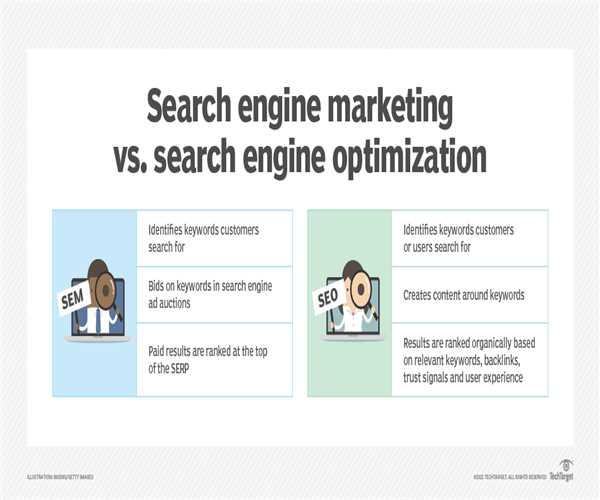Search Engine Optimization (SEO) and Search Engine Marketing (SEM) are two of the most commonly used digital marketing techniques in the online world. Although the two are similar in many ways, there are some key differences between the two that set them apart.
I. Definition of SEO and SEM
Search Engine Optimization (SEO) is a digital marketing strategy that focuses on improving a website’s ranking in search engine results pages (SERP) by optimizing the site’s content and structure to make it more search engine friendly. The aim of SEO is to make a website appear higher in the SERP when users search for relevant keywords or phrases.
Search Engine Marketing (SEM), on the other hand, is a form of digital marketing that focuses on promoting a website through paid advertising. This involves purchasing advertising space on search engines such as Google AdWords, Bing Ads, and Yahoo Gemini. The aim of SEM is to generate more traffic to a website by placing ads in the SERP, thus increasing the visibility of the website.
II. Key Differences between SEO and SEM
The primary difference between SEO and SEM is their approach to generating website traffic. SEO is focused on organic search results, while SEM involves paid advertising. SEO takes longer to show results, while SEM provides immediate results.
Another key difference between the two is the cost involved. SEO is a long-term strategy that involves optimizing a website’s content and structure, which takes time and effort. SEM, on the other hand, is a paid strategy that involves purchasing advertising space, which can be expensive.
Another key difference between Search Engine Optimization (SEO) and Search Engine Marketing (SEM) is the duration of results. SEO is a long-term strategy that focuses on improving a website's ranking in the organic search results, which takes time and consistent effort. On the other hand, SEM is a short-term strategy that focuses on purchasing paid search ads to drive immediate traffic and conversions. SEM results can be seen almost instantly, but they are dependent on a continued budget for paid advertising.
Another important aspect to consider is the target audience. SEO is focused on attracting organic, natural traffic from users who are searching for relevant content. On the other hand, SEM targets users who are actively searching for specific products or services, making it more suited for businesses looking to drive conversions and sales.
For example, a business selling handmade crafts may prioritize SEO efforts to attract users searching for unique, handmade items. On the other hand, a business offering emergency plumbing services may prioritize SEM to reach users who are searching for immediate solutions to their plumbing problems.
In summary, both SEO and SEM have their own unique advantages and are important for different reasons. Businesses should consider their goals, target audience, and budget when choosing between SEO and SEM or when creating a comprehensive online marketing strategy that incorporates both.

III. Importance of SEO and SEM in Digital Marketing
Both SEO and SEM play important roles in digital marketing. SEO is crucial for increasing the visibility of a website in organic search results, while SEM helps to generate immediate traffic to a website through paid advertising.
SEO and SEM work together to increase the visibility of a website in search engines. By combining the two strategies, a website can optimize its content for search engines and increase its visibility in both organic and paid search results.
In conclusion, SEO and SEM are two different digital marketing strategies that are important for increasing the visibility of a website in search engines. Both have their own unique advantages and disadvantages and can be used together to achieve optimal results in digital marketing.